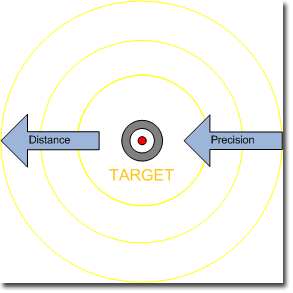Target Localization
One of the most difficult aspects of an intervention mission is the identification and localization of the target.
The localization subsystem, that is the main support for the capabilities of the autonomous manipulation of SAUVIM, is performed by using and fusing different technologies (acoustical and optical) in order to guarantee a suitable, range dependent, level of reliability, precision and accuracy. The SAUVIM AUV switches through three main sensing methods in order to acquire reliable data:

In long range (over 25m), 375KHz image sonars are used for initial object searching. The accuracy in this range is necessary only to direct the vehicle toward the target zone.
In mid-range (2-25m), DIDSON sonar is used for object recognition and the vehicle positioning. This is the phase where the vehicle has to position itself in order to have the target confined within the manipulation workspace.
Finally, when the target is within the manipulator workspace, short range and high accuracy sensor are used in order to perform the actual intervention task. This goal is achieved with the combined use of underwater video cameras and an ultrasonic motion tracker, used to retrieve the real-time 6 DOF position of the target during the manipulation tasks.
The device utilizes high frequency sound waves to track a target array of ultrasonic receivers. The use of 4 transmitters at the stationary positions with 4 receivers on the target can be used to determine the 6 DOF generalized position (rotation and translation) of the object.